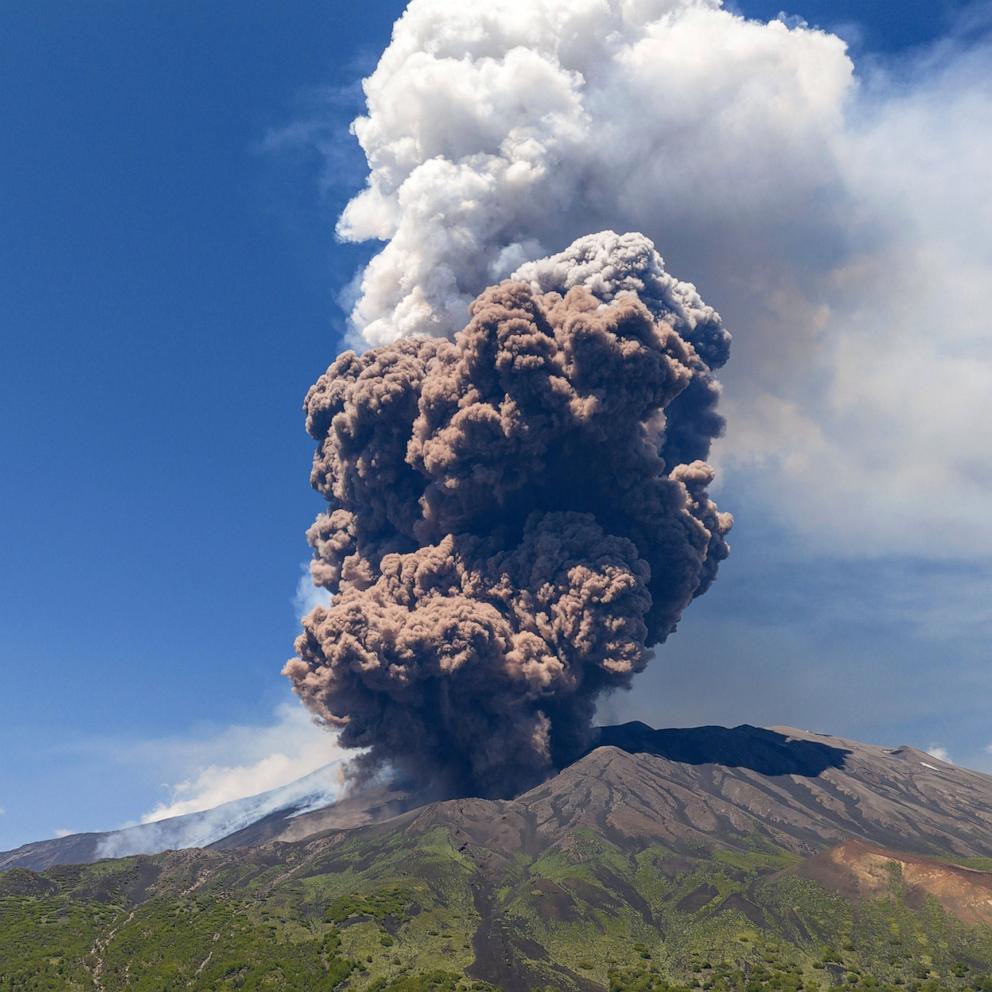Why scientists are concerned over the record amount of seaweed in the Caribbean
Millions of tons of seaweed currently floating in the tropical Atlantic Ocean could soon make its way toward the United States, according to researchers following the phenomenon.
A record amount of sargassum is currently impacting shores throughout the Caribbean, from Puerto Rico to Guyana, scientists say. The prickly, brown algae releases toxic gas, killing wildlife.
Sargassum has experienced a "robust population" so far this year, Barry Rosen, professor in the department of ecology and environmental studies at The Water School at Florida Gulf Coast University, told ABC News.
Record amounts of sargassum have been observed
Nearly 38 million metric tons of sargassum have been observed in the Caribbean, breaking historical records, according to a report released by the University of South Florida on Saturday. The previous record set in June 2022 measured about 22 million metric tons -- marking a 58% increase so far for the record set in 2025.
The bulk of the blooms are in the western tropical Atlantic, where the Amazon River empties into the ocean, Brian Lapointe, a professor of ecology and water quality who has been studying sargassum since the 1980s, told ABC News.

Droughts in the Amazon River in 2023 and 2024 caused more nitrogen and phosphorus to build up in the watershed. But recent extreme precipitation that caused landslides and flooding in the region caused the "first flush" of large amounts of water from the river to enter the Atlantic Ocean.
"It came out of the drought with a vengeance," Lapointe said.
The high concentrations of phosphorus likely caused the sargassum plumes to multiply so quickly, he added.
Significant Sargassum inundation events have occurred around most Caribbean nations and islands, including the Mexican Caribbean coast, according to the USF report.
Researchers have been studying the seaweed since the Great Atlantic Sargassam belt -- a new phenomenon -- occurred in 2011, Brian Barnes, an assistant research professor at the University of South Florida's Optical Oceanography Lab, told The Associated Press.
Impacts of sargassum
Sargassum is a "public nuisance" that requires disposal, but also rots on beaches, Coty Jen, an associate professor of chemical engineering at Carnegie Mellon University, told ABC News. The algae is especially harmful to mangroves, which serve as nursery habitats, and can smother sea grasses and coral reefs, Lapointe said.
"It decomposes and rots and forms these dead zones devoid of oxygen, so you can have fish kills," Lapointe said.
The seaweed also releases smelly compounds into the air as it rots, Jen said.
The smell stems from hydrogen sulfide, one of the main compounds in sargassum, which contributes to a rotten egg smell. Other compounds like ammonia and amines contribute to the fishy smell, Jen said.
The compounds contribute to the formation of fine particulate matter and cause air quality to go down in surrounding neighborhoods, Jen added.

Sargassum that has come ashore has already had "catastrophic impacts" throughout the Caribbean, Lapointe said.
Tourism has been impacted as well, with the French Caribbean island of Martinique forced to temporarily close as a result of the seaweed.
"The biggest impact for most people is the economic impact of tourism," Lapointe said. "...When they get piled high with rotting sargassum, that's that's a non-starter for tourists."
While large inundations of sargassum can have a severe negative impact on a particular coastline, the majority of the biomass is expected to stay offshore, where it is a natural and beneficial habitat, Barnes told ABC News.
"Typically, at sea, we consider Sargassum to be a very positive thing," Lapointe said. "It provides habitat for hundreds of species of fishes and invertebrates, including endangered species like sea turtles."
Scientists concerned that sargassum blooms will spread to US
The situation of excess sargassum will likely get worse, Rosen said, adding that ocean current and wind are the key factors in determining how severe the impact in the southern U.S. will be.
In previous years, June continued to see increases of sargassum in most regions, according to the USF report. More sargassum is expected to be transported to the western Caribbean Sea before reaching the Gulf through the Yucatan Peninsula.
Small to moderate amounts of sargassum are expected along the Florida Keys and the state's southeast coast, according to the USF report.

Researchers began to see an uptick in sargassum impacts in Florida in 2014, Lapointe said.
As recently as 2023, southeastern Florida was impacted by sargassum blooms, Rosen said.
Beaches in Florida, such as the Keys and Miami-Dade County, have had to include sargassum cleanups as part of their municipal budgets, Lapointe said.
"We have not seen catastrophic impacts that the Caribbean has seen, but this year could be different, and this is what we're bracing for right now," he said.




